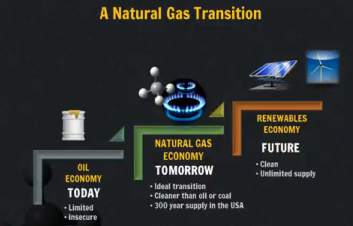Scientists have discovered inexpensive materials that can convert natural gas into useful chemicals under mild conditions, a new study in the 14 March issue of the journal Science reports. This approach may eventually compete with technologies for generating the same chemicals from petroleum, a fossil fuel that emits a lot of carbon dioxide into the atmosphere when it burns.
Like petroleum, natural gas is a fossil fuel that can be refined and separated into a number of widely-used consumer products including paints, fuel and fertilizer. “Almost anything that can be made from petroleum can be made from natural gas,” explained Science co-author and Scripps Research Institute scientist Roy Periana.

Natural gas is a cleaner fuel than petroleum, however, emitting no soot or ash and less carbon dioxide when burned. In a recent Science Live Chat, Environmental Defense Fund Chief Scientist Steve Hamburg emphasized the benefit of burning natural gas over petroleum.
“Compared to other fossil fuels, you get a lot more work per molecule of carbon dioxide emitted into the air with natural gas,” he said. “This is a real plus, because if we have any hope of reducing climate change, we have to quickly, radically reduce the carbon emissions from our economy, and natural gas is an important way to do this from the fossil fuels side.”
Despite the cleaner status of natural gas and its availability, the current technology for converting it into chemicals and fuels is very expensive. Thus, the United States and many other countries rely more heavily on petroleum. It also requires multiple steps and temperatures in excess of 800 degrees Celsius.
“If we could utilize lower temperatures and create technology that generates these products in one step, not only would we save billions of dollars but we would also reduce the carbon footprint of these essential processes,” said Periana. “It could change the petrochemical industry.”
Unfortunately, the processes to convert natural gases in this way haven’t been developed. “This is considered one of the holy grails of chemistry,” Periana explained.
Now, Periana and colleagues have identified new materials that can successfully break down natural gas into its constituent goods at lower temperatures and with as few process steps as possible.






